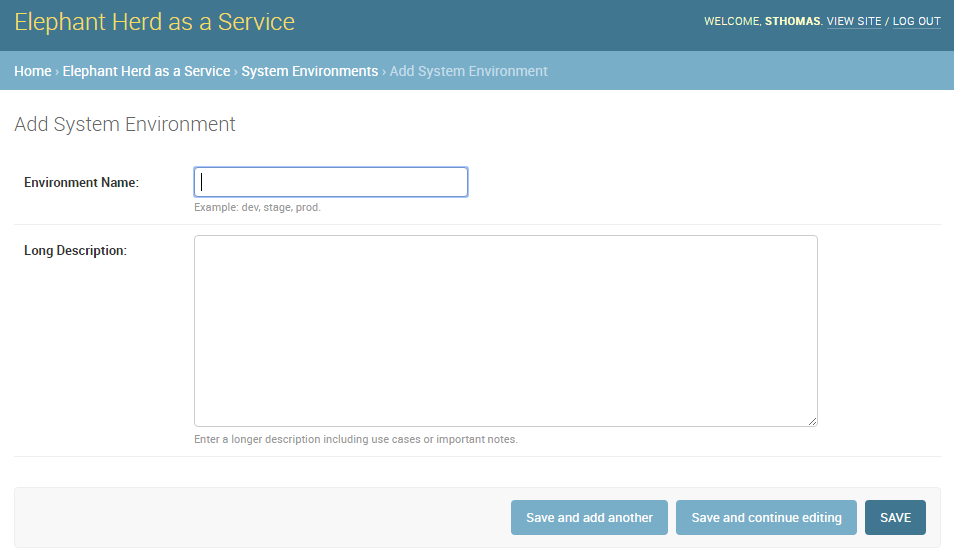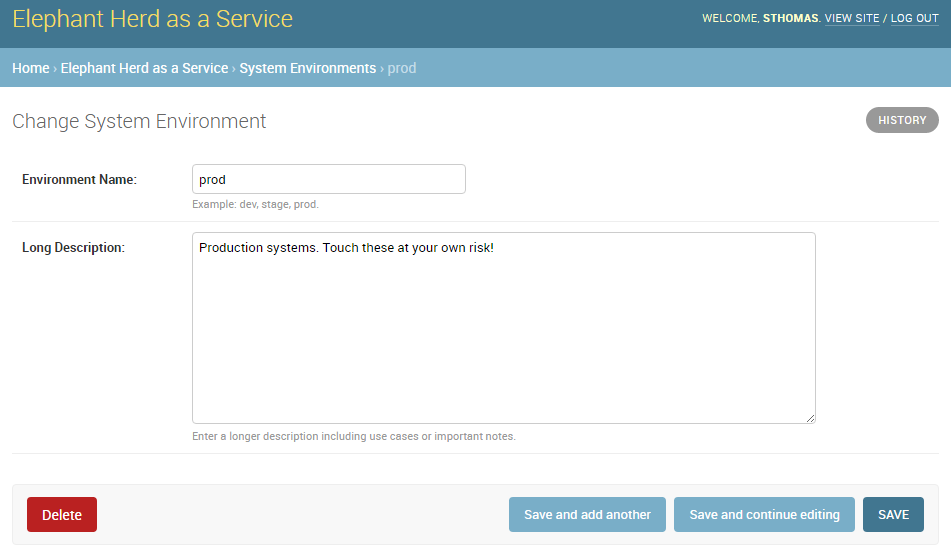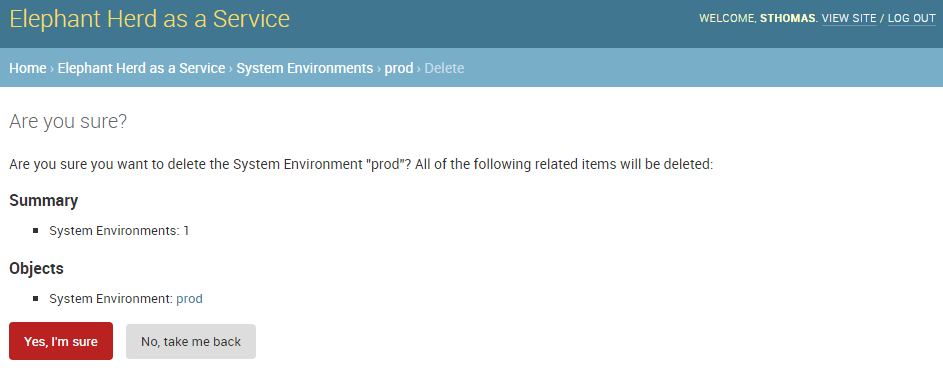Postgres Open 2016

| Author: | Shaun Thomas |
|---|---|
| Date: | September 15th, 2016 |
| Venue: | Postgres Open 2016 |

I apologize in advance.
You may remember me from:
I practically live at this conference, and no, I have no idea why they keep subjecting everyone to my incoherent rambling.
HaaS != Haas

Sorry to all the Haas groupies!
While the esteemed Robert Haas has contributed a great deal to the Postgres project and community, ElepHaaS is not named after him. So sorry, Haas groupies! The real reason for the name is much more mundane.
Our issue may not be a unique one, but it was certainly pressing. How to manage over 100 Postgres instances with some kind of semblance of organization. Configuration management tools only go so far, and logging into each server to perform operations doesn't scale. Performing DR tests was _especially_ pernicious. Failback was even worse.
How do you even begin addressing that kind of problem?
[ This space intentionally left blank ]
There are no tools to manage such large heterogeneous clusters. The closest tool is probably repmgr, but event that operates on a per-cluster basis. What happens when you have dozens of clusters? We needed another layer of abstraction to address our use case, and there just isn't anything that fits the bill.
So we decided to write one.
Our grand mascot

Backing up a bit, we need to name this thing somehow based on how it works. Let's start with the Postgres mascot itself, the grand elephant stomping other database engines into dust.
... and his family.

Ever since Postgres acquired streaming replication, this organization became much more ubiquitous. It's now possible to have a herd of related Postgres instances. This is also where we begin to encounter potential management complications. Tools like repmgr simplify wrangling one herd no matter its size, and judicious scripting can probably juggle several.
Unfortunately, we had crossed the "several" label years ago and were starting to feel the pain.
ElepHaaS is a service for managing this

Instead of merely addressing a single herd, ElepHaaS can operate on multitudes. Larger organizations which rely on Postgres often have correspondingly wide architectures. At the very least, dozens of unrelated applications from competing or integrated teams tend to accumulate over the years.
Regardless, all of these Postgres instances still require maintenance, management, backups, replica rebuilds, DR failovers, and any number of other tasks. Any one of these jobs would be onerous to perform on a mere 20 servers, let alone 200. Even with scripting, command broadcasting, and configuration management, there needs to be a central command nexus. So why not fully leverage it with a GUI wrapper?
From the second ElepHaaS was born, it was able to start, stop, and promote instances. That was the proof of concept that determined we should move forward with more features. From there, we started adding filters, search boxes where appropriate, and other niceties to encourage using the tool in place of ad-hoc management.
Next came replica handling. Promoting a replica is really a different command sent to pg_ctl, so that was easy. Replica rebuilds required a bit more magic, and this is where the real power of ElepHaaS emerged. Already, we were able to apply bulk operations to entire constellations of instances and related replicas. Click a few checkboxes, select an operation, and boom!
But merely rebuilding a replica isn't really enough. Disaster recovery pairs are a common fixture, so we wanted to directly support them. So we added a menu to explicitly acknowledge DR pairs. Any herd with more than one member is automatically listed, and a failover automatically chooses the most up-to-date replica. We even added DNS so applications could follow the migration.
This is when ElepHaaS became a true "aaS" piece of software. The server containers where the instances run is not nearly as important as the data itself. Thus the first release was born.
There are surprisingly few moving parts, here. We obviously need Postgres. Beyond that, Django is notorious for its "free" admin interface for database models. That makes a perfect rapid application development choice for building a system specifically for administrating servers.
But how to actually contact and manage those servers? What better than the network glue that is SSH keys? This enabler practically gives us carte-blanche to run arbitrary commands from a central location. Django can hide the gritty details and simply invoke the commands on our behalf on any instance we've registered, wherever it might reside.
And rsync? It's still the best synchronization software available on UNIX systems. With our SSH keys in place, we can rebuild replicas with rsync. Future versions will probably integrate pg_rewind as a first pass to synchronize fewer files when applicable. Still, it's a much better choice than pg_basebackup for larger instances.
This is the environment model
class Environment(models.Model): environment_id = models.AutoField(primary_key=True) env_name = models.CharField('Environment Name', help_text='Example: dev, stage, prod.', max_length=40) env_descr = models.TextField('Long Description', max_length=2000) created_dt = models.DateField(editable=False) modified_dt = models.DateField(editable=False) class Meta: verbose_name = 'System Environment' db_table = 'ele_environment' ordering = ['env_name',] def __unicode__(self): return self.env_name
For those who don't know what Django is, it's a Python site development toolkit. One central design motivation is to make sites that are data-driven, which implies a dependence on some kind of database. That data must be described by a model, and since this is Python, an ORM goes on top.
That ORM is really what makes Django work. Table rows become Python objects, and the model itself is an abstraction for fetching various combinations of those objects. As a natural consequence, we gain a lot of related functionality.
It looks like a lot, but gives us:
A _lot_ of related functionality. We'll be using the base model object all over the scaffolding code. Beyond that convenience, we're allowed to override the default table and column names to better fit a traditional database architecture. It's hard for a DBA to resist that, right?
The amount of code we wrote and the related ROI is why Django powers ElepHaaS.
This creates an admin menu
class EnvironmentAdmin(admin.ModelAdmin): exclude = ('created_dt', 'modified_dt') admin.site.register(Environment, EnvironmentAdmin)
And that tiny bit of code gives us...
And here is where Django really shines. The model code is much larger than the related admin code. Why? Some very patient human being wrote an entire harness of libraries that operates upon models, leveraging commonalities inherent to all models. This means that associating a model with said harness is the ultimate incantation.
Let the menus begin!
View existing environments

Our model is admittedly simple, yet we're already seeing the benefits. The Django admin suite gives us a basic overview of table contents, complete with pagination, header sorting, and so on. And why not? It's all just SQL in the end, and we're more than familiar with that.
Add new environments

Remember that help text we added to the model? Well, there it is! Beyond that, take a look at the menu bar itself and revel in the comprehensive breadcrumbs. They even facilitate data entry with multiple save options.
Modify existing environments

Editing uses the same format as adding, except we can delete from this menu as well. These forms are entirely based on the datatype we assigned to the model, so there's a certain consistency to the entire admin system.
Verification before deleting

And by default, all deletions trigger a confirmation step that presents us with the consequences of proceeding. Possibly the best part about all of these menus is that they're template-driven, meaning we can override any of them. Maybe we want more detailed confirmation pages, for example.
ElepHaaS _does_ require a few Python libraries beyond any Django might demand. All of them map directly to functionality ElepHaaS offers. We need Psycopg to connect to Postgres, Paramiko to invoke remote SSH commands, and DNSPython for DNS migrations in DR failovers.
In addition, we've split the configuration files and included examples for incorporating LDAP authentication. This means anyone with managed user accounts can integrate ElepHaaS directly into their organization. As long as the necessary Python library is there, of course.
Take _that_, subspace.
Start with requirements
pip install django psycopg2 paramiko dnspython
Install the engine
wget https://github.com/peak6/elephaas/archive/v1.0.0.tar.gz tar -xzf elephaas-1.0.0.tar.gz
Use or modify default config
cd elephaas-1.0.0
mv elephaas/local_settings.example.py elephaas/local_settings.py
There's no make file or configure script, but we did include packaging for Debian-derived systems, with RHEL on the horizon. Without that, installation is hardly arduous. Really it just boils down to unpacking the archive and creating one config file.
Initialize the metadata
createdb admin
psql admin -c 'CREATE SCHEMA utility;'
python manage.py migrate
python manage.py createsuperuser
Start the service
python manage.py runserver 0.0.0.0:8000
The commands here assume the default configuration file was used without modification. This means ElepHaaS will store its metadata in a database named admin in the utility schema. Beyond that, Django uses manage.py as a master command interface to Django projects. The migrate parameter to manage.py bootstraps all necessary metadata, and createsuperuser allows us to log in. If we're not using LDAP, we can add more users from the admin interface itself.
Then we just start the daemon itself. In a real system, we probably wouldn't use the runserver parameter of manage.py, as that's generally reserved for debugging. But it's perfect for testing things out! There are lots of other more formal ways to run a Django app.
Set up SSH keys on all managed systems
ssh-keygen -t dsa -N '' -f ~/.ssh/id_dsa
ssh-copy-id postgres@my-cool-server
ssh-copy-id postgres@my-lame-server
ssh-copy-id postgres@my-insane-server
But remember:
Whatever user is running the actual ElepHaaS daemon needs their SSH key on all systems we want to manage. In an ideal world, we'd do that by generating the key and using some kind of configuration management tool to broadcast that key to all of the appropriate server and container profiles. But it's not too difficult to perform this task manually either, and we only need to do it once.
This is the glue that binds ElepHaaS to all of instances it manages.
ElepHaaS reminds you of SSH keys

One of the configuration settings in local_settings.py is our public SSH key. When adding a server, ElepHaaS presents this key _just in case_ the new server doesn't have it already. We wanted to make sure it was obvious this is how ElepHaaS communicates with instances on all servers.
Let's see it in action!
B-but...

Sadly, yes. ElepHaaS is still relatively young, and thus far, has a grand total of one active developer who still has a day job. Granted, that job is simplified to a certain extent by ElepHaaS itself, but there are still development velocity limitations.
What ElepHaaS currently does is not _nearly_ enough, but it's a great start. Everything is on github, and we welcome sane pull requests.
This list really could be endless. We have the basic scaffolding for a potentially amazing tool, and it's already at a point where it vastly simplifies constellation management. Of course, there's always room for improvement. Our choice of Python and Django mean functionality should be relatively easy to add, too.
Well, eventually.
ele_tools
Since ElepHaaS originated on an Ubuntu system, it uses a lot of the Debianisms that environment provides. The pgutil_report tool performs Postgres instance auto-discovery and transmits everything it finds by injecting it directly into ElepHaaS database metadata. As a result, the pg_lsclusters utility was the easiest way to "find" Postgres instances on a server.
This tool works best when combined (notice a trend?) with configuration management. Install it on any server with a Postgres profile, and all instances will automatically populate in ElepHaaS. It's definitely easier to manage instances when they tattle on themselves.
But sadly, this tool only works on Debian-based Linux distributions due to its reliance on pg_lsclusters. More comprehensive detection mechanisms could generalize it so RHEL (or other Linux friends) can also enable autodiscovery. Still, it's just a convenience that doesn't affect ElepHaaS itself, so feel free to ignore it!